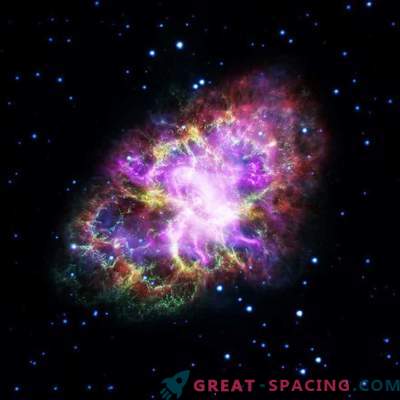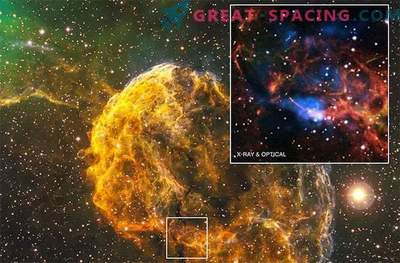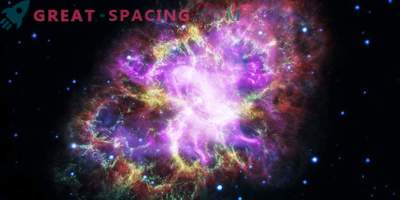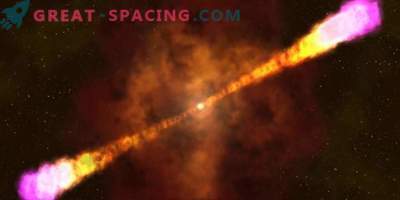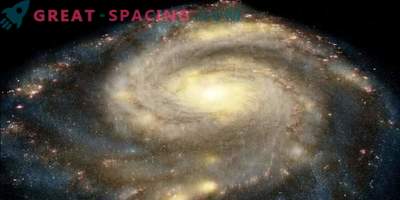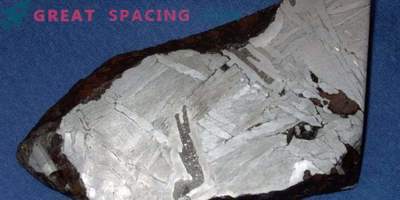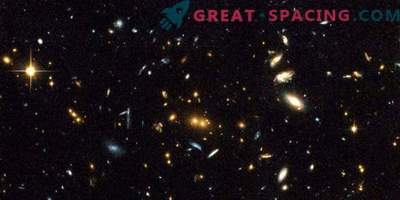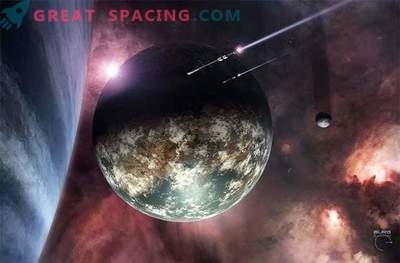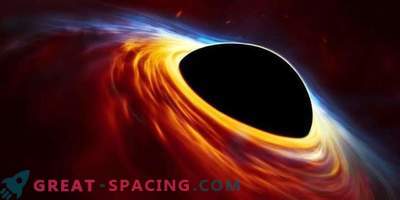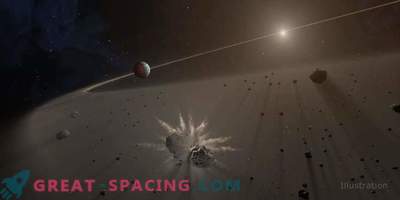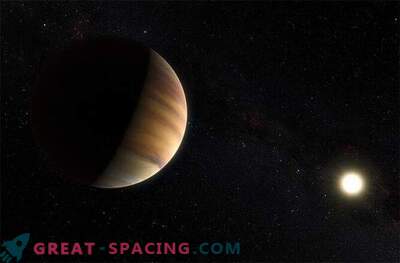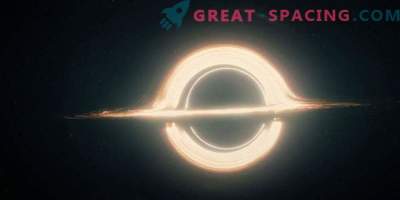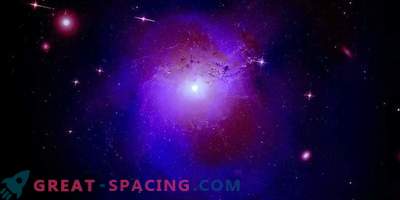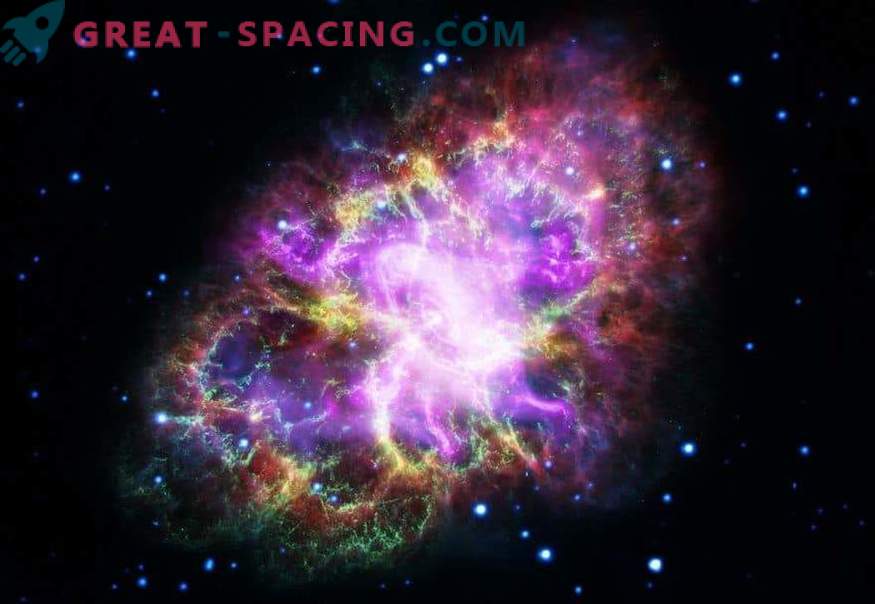
Image of the Crab Nebula, obtained by five telescopes, covering almost the entire width of the spectrum.
To get the most complete image of the Crab Nebula, astronomers decided to combine data from telescopes, collecting information from radio waves to powerful X-rays. The Crab Nebula is the remnant of a bright supernova explosion seen back in 1054. It is distant from us at 6500 light years. In the center is a superdense neutron star, making a revolution in 33 milliseconds. Such speeds cause it to emit radio waves and light, which makes it a pulsar (bright dot in the center). The nebula took on a rather complex shape due to the activity of the pulsar, or rather the swift winds and the ejected supernova material. The picture contains information from 5 telescopes: VLA (Very Large Antenna Grid - radio) - red, Spitzer (infrared) - yellow, Hubble (visible) - green, XMM-Newton (ultraviolet) - blue and Chandra (X-ray) - purple.
Observations of the VLA, Hubble and Chandra were collected in 2012.
Begins with a composite image of the Crab Nebula. Red color shows the strength of the neutron star wind. Yellow includes the glow of dust particles absorbing ultraviolet and visible light. The green image provides a view of the hot thread structures. Blue and violet demonstrate how a neutron star makes the energy cloud of electrons rotate rapidly.

